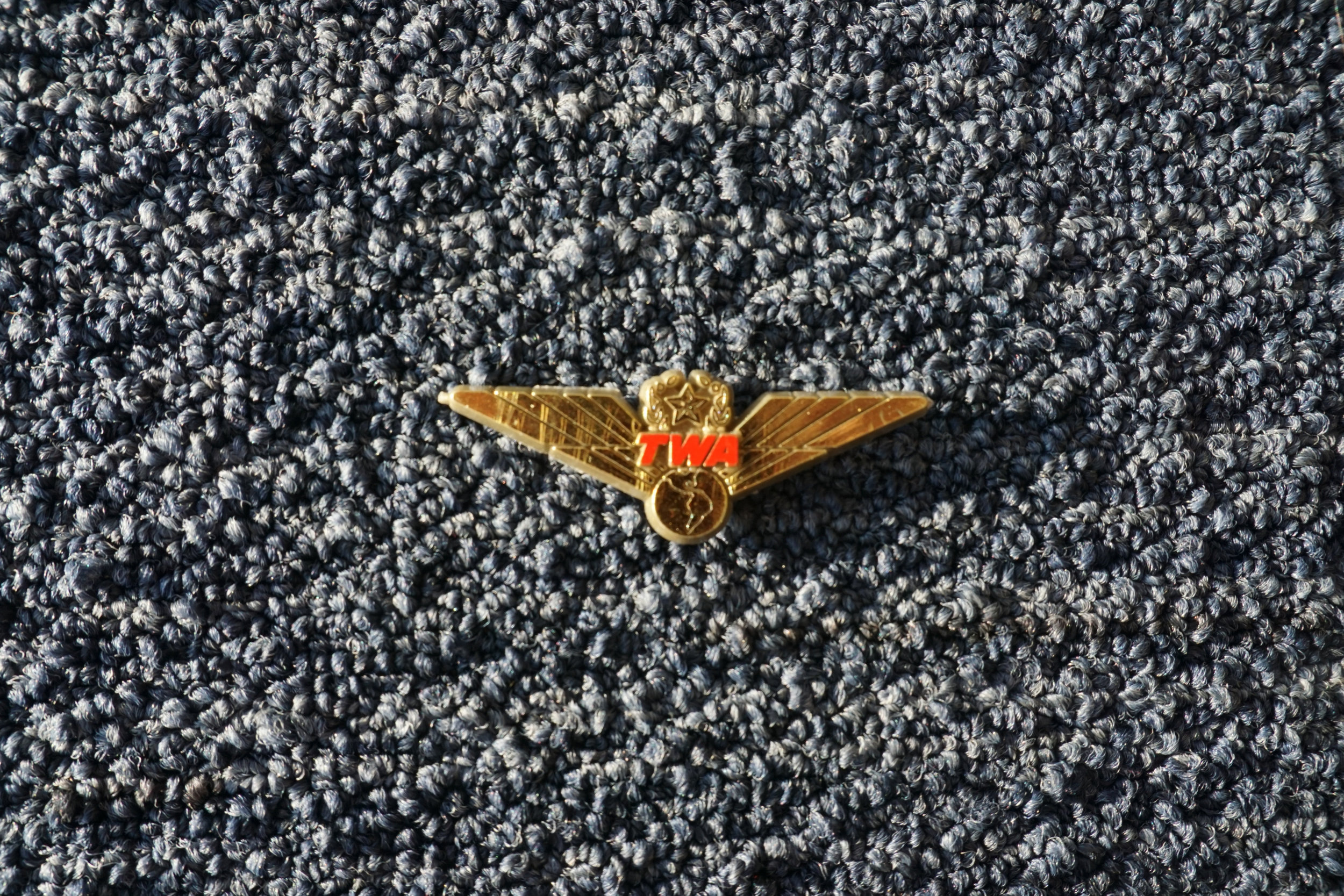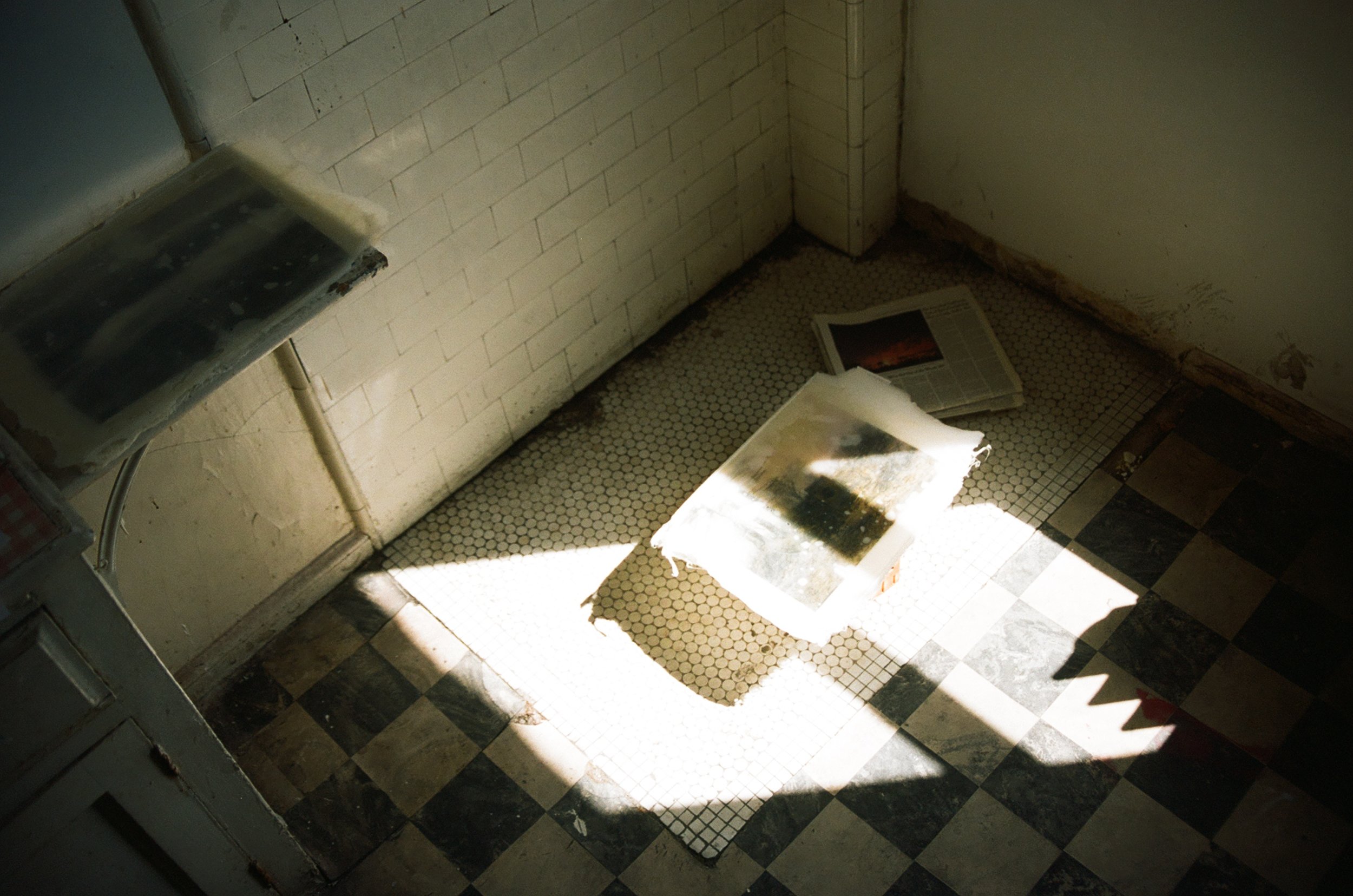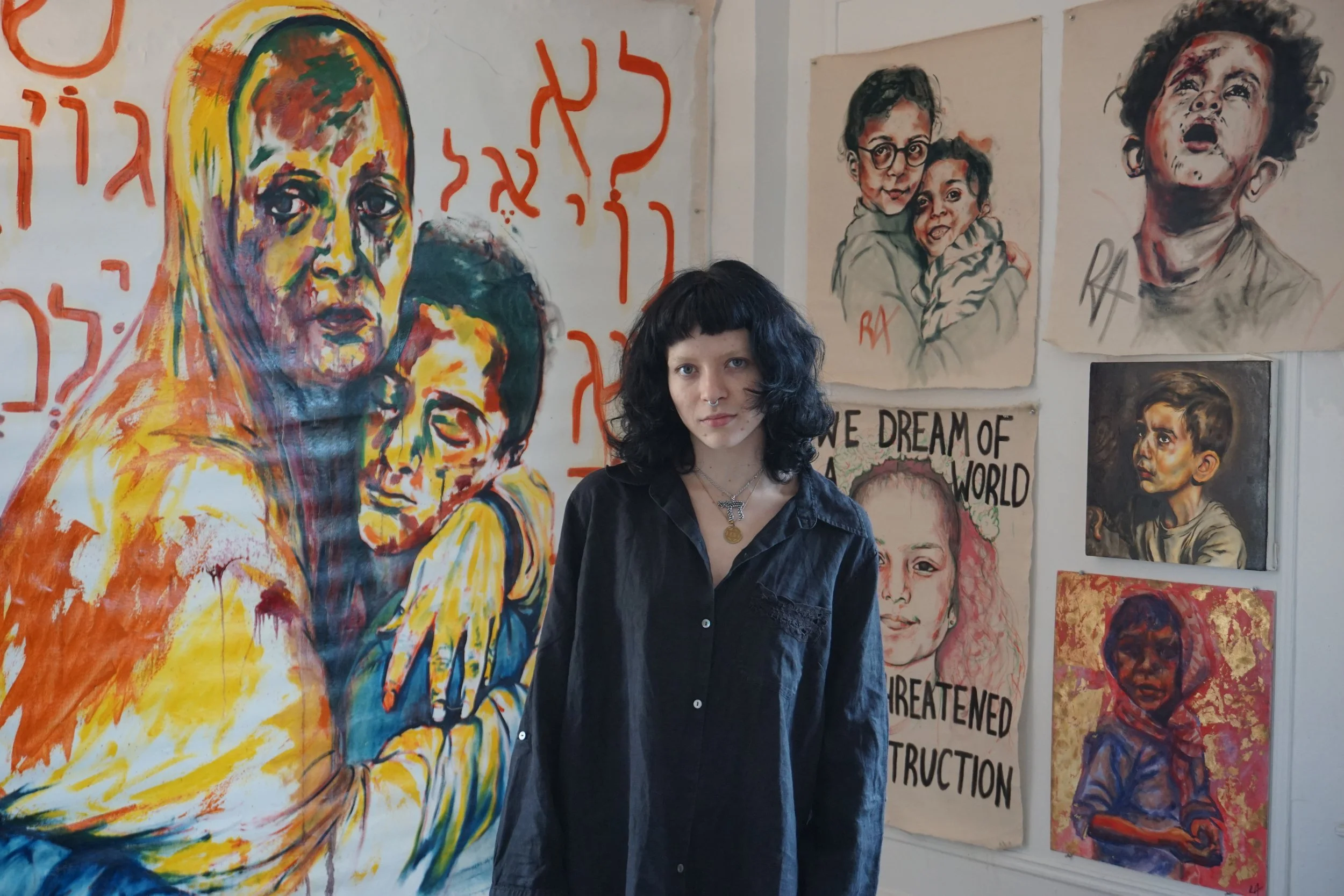




Interview and photography by India Halsted
Introduce yourself.
I’m Sophie. I’m a senior at Barnard and an artist. I’m majoring in Art History and Visual Art. I was born in Los Angeles and raised in Northern California.
What were your first moments of creating?
I was exposed to a lot of art when I was quite young: in the home, in museums, through conversations, through family members that are artists. There was a specific period of time when a group of friends and I would see gallery and museum shows and re-create the work.
Who are the artists who influence your work?
Lisa Oppenheim, Emily Jacir, Rachel Whiteread, and Lorna Simpson have in large ways influenced my thesis. I am also very influenced by Eva Hesse.
What materials do you work with? How would you describe them?
They tend to be malleable, organic, and non-rigid – like wax and cheesecloth. I want to play with resin too. I am attracted to its luminosity: the way it glows and the way it can take form.
What classes have most informed your work?
Though it’s hard to locate a specific class, Leslie Hewitt’s “Freestyle and Displacement” had and continues to have particular influence on my work. In large part because of its focus on representations of cultural trauma: trauma of dispossession and diaspora. Leslie renewed my faith in the political power of abstraction. The Atlas Group’s work is a very good example of this subtle strength. So is Leslie’s – it’s quiet but deeply political.
Describe your studio space. Is it a place of exhibition? For yourself? For others?
It’s an exhibition space for myself, but then in the case of the open studios it’s a way to collectively open up the class’s thinking. When others enter the studio the thinking is on display in addition to the work.
How would you describe your artistic process and when would you say a work is finished?
Sometimes it’s clearer than others. Ultimately an artwork is finished for me when it feels that the work can stand. I always have my hands in a lot of places which helps because I don’t just have this linear way of saying “this is started” and “this is done.” Because I work so fluidly, I often find resonances between projects.
Describe your series “We Are Not On Solid Ground.”
The fires in Santa Rosa and Hurricane Irma happened right as I was beginning to think about what I wanted to make for the semester. I wasn’t preparing to respond to the trauma of natural disasters. That is the source of the images for “We Are Not On Solid Ground." The theoretical grounding came from an idea in a documentary film class last year. We read an essay by André Bazin, “The Ontology of the Photographic Image.” Bazin describes a film of a bullfight in which the bullfighter dies. He then recounts his own uncanny experience of seeing the bullfighter’s death a second time when watching the film on a different afternoon. Change is ‘mummified’ in film for Bazin; film makes death repeatable. So, I was interested in this idea of mummification as the repetition of trauma.
What about these two events inspired you? Is it their timeliness or their personal significance?
I was feeling particularly affected by the news at the time. I was trying to insulate myself and so the work was a way to not insulate myself. And in the case of the fires I was particularly unsettled because they happened just half an hour away from where I grew up. I was looking at images of the fires in The New York Times. They were incredibly beautiful images – charred ground and soft pink skies, and that was unsettling. I was curious if the images of [Hurricane] Irma, which was happening simultaneously, would be equally romantic. I think beauty was a point of entry for me. Because these horrific disasters were photographed so beautifully, I could look at them and there was a sense of stillness as something captured. There is a dichotomy between the stillness of the image and my repetition of it through mummification.
How do you define mummification and what does this process mean to your work?
Mummification alludes to the journalistic original. It’s also a kind of psychoanalytic process. The masking (through gauze and wax, or in another case, Neosporin) re-enacts repression but at the same time it’s also a preservation, a way to bring the repressed material to light.
How is material important to “We Are Not On Solid Ground”?
The images are printed on vellum, which is a sort of filmic material. It’s an inkjet print that I wrapped in cheesecloth and embalmed in wax. This series in particularly was largely inspired by Eva Hesse but also by the idea of the wound, the materials that might dress a wound. Yet these dressings don’t necessarily fix anything. It’s a kind of naive attempt. With some of the works, like one image of charred washing machines, you can see the impression of the turkey pan – there are these domestic traces.
How do you separate the work of taking photos and borrowing and embalming images?
I recently got disenchanted with producing images given that I experience so many images. Relevant to all the work is the assembly of images or the assembly of an experience of images. There are these associative networks between each of the projects [some integrate the same events] which a part of me identifies as nebulous, but it is also a psychoanalytic logic.
Does the process of mummification bring you closer or farther away from the original?
It’s hard to call myself a witness because I wasn’t there. I try to emphasize my distance in all of my work and yet I think of my work as a kind of bearing witness. The process of mummification represents my distance but it also brings me closer because I needed to work through these events. I didn’t just want to hear about the ash that was falling on my friend’s car in Los Angeles when Southern California was ravaged with fires soon after [those in Santa Rosa] and not process it. There’s the witnessing and experiencing of these images and then there’s also its aftereffects. The aftermath of these events carried with them an atmosphere, both environmentally and psychologically.
Photography always raises the question of the original. But calling these appropriated images ‘sources’ rather than ‘originals’ more closely approximates what I’m trying to do.
Describe your series “Picturing.”
The name “Picturing" came to me as a way of saying that I was documenting, a kind of journalism of journalism, one or two steps removed. It locates myself. I applied Neosporin to my camera lens, which is a Pictorialist technique. Stieglitz used petroleum jelly to create a romantic effect, to make photography more painterly. I first saw this technique in this Man Ray’s film “Étoile de Mer.” It followed from” We are not on stable ground” to use Neosporin as another way to to mummify images, a more integrated affront than before. In this case [using Neosporin] was a way for me make the digital image more sculptural and material.
What about films or specific films inspire you or your work?
I think back to certain moments of stillness or repetition. There is a scene in Truffaut’s “Jules et Jim” where Catherine is laughing and her laughter stills, then continues, stills, then continues. Or at the very end of the “400 Blows” when Antoine is suddenly freezes running on the beach. I think these examples were initial ways for me to think about photography and film. This reflexive thinkingthat the moving image is composed of stills informs my work. Chris Marker’s film “La Jetée” has this archival quality.
Describe your current project “Junior.”
I’ve been collecting junior pilot wings, the pins you are given on planes as a kid, in thinking about totems of safety. In my work that there is also this concern of nuclear warfare. I was thinking of the sky and atmosphere and these junior pilot wings came as a sort of solution. I soon found that photographs I took of the wings had more weight than the wings themselves. I wanted to play with the apparatus of display so I decided to use a commercial, museological postcard display so that viewers would be able to take them. So that they can carry a talisman. I liked the idea of passage, of publicly locating yourself, and I was thinking of On Kawara’s work.
I’m still in the process of theoretically framing them in all honesty. I went to the March for Our Lives yesterday and was really moved by the signs children had written. It really changed how I defined the wings and made me think, could they be voices unheard? What could they locate? What could they demand? I’m leaning towards putting these slogans on the back of these postcards vertically as a structural aspect. I want to leave space for other people to write.
How do you reconcile physical and cultural trauma with collective loss in your work?
I’m not exactly sure if these are concepts that need to be reconciled, but they are definitely all at play. Rosalyn Deutsche introduced me to an interesting rereading of Freud’s “Mourning And Melancholia.” For Freud, one withdraws from the world in response to trauma or loss. This is what he calls depressive melancholia. So what’s interesting about these works, “There is No Threat” in particular, is that they seek out another form of melancholia. Jonathan Flatley uses the term non-depressive melancholia to say there is a form of melancholia that leads to an interest in the world rather than a withdrawal from it. That through one’s own losses you can attach to others’ losses.
Is part of being an artist being sensitive?
I think sensitivity is essential to my work. Anxiety has taken on physical effects and that’s the juxtaposition I’m abstractly making in “There is No Threat” with the clinical swabs. It brings two languages together – the language of safety alerts (which I’ve screenshotted) of the false ballistic missile threat in Hawaii this January and the language of medical props. I’m trying to infuse a sense of healing but also of fragility or vulnerability.
Where do you see your work going in the future?
I’m very responsive and I typically have a lot of threads at any given time so it’s difficult to see exactly where my work will take me.
That said, I collected newspapers from the day of the Los Angeles fire – I bought about twenty of them. I’ve thought about dipping them in wax or stacking them.
In terms of my own plans, I will be in New York next year doing what I’m not sure but surely maintaining an art practice. I ultimately plan to get an MFA.






























